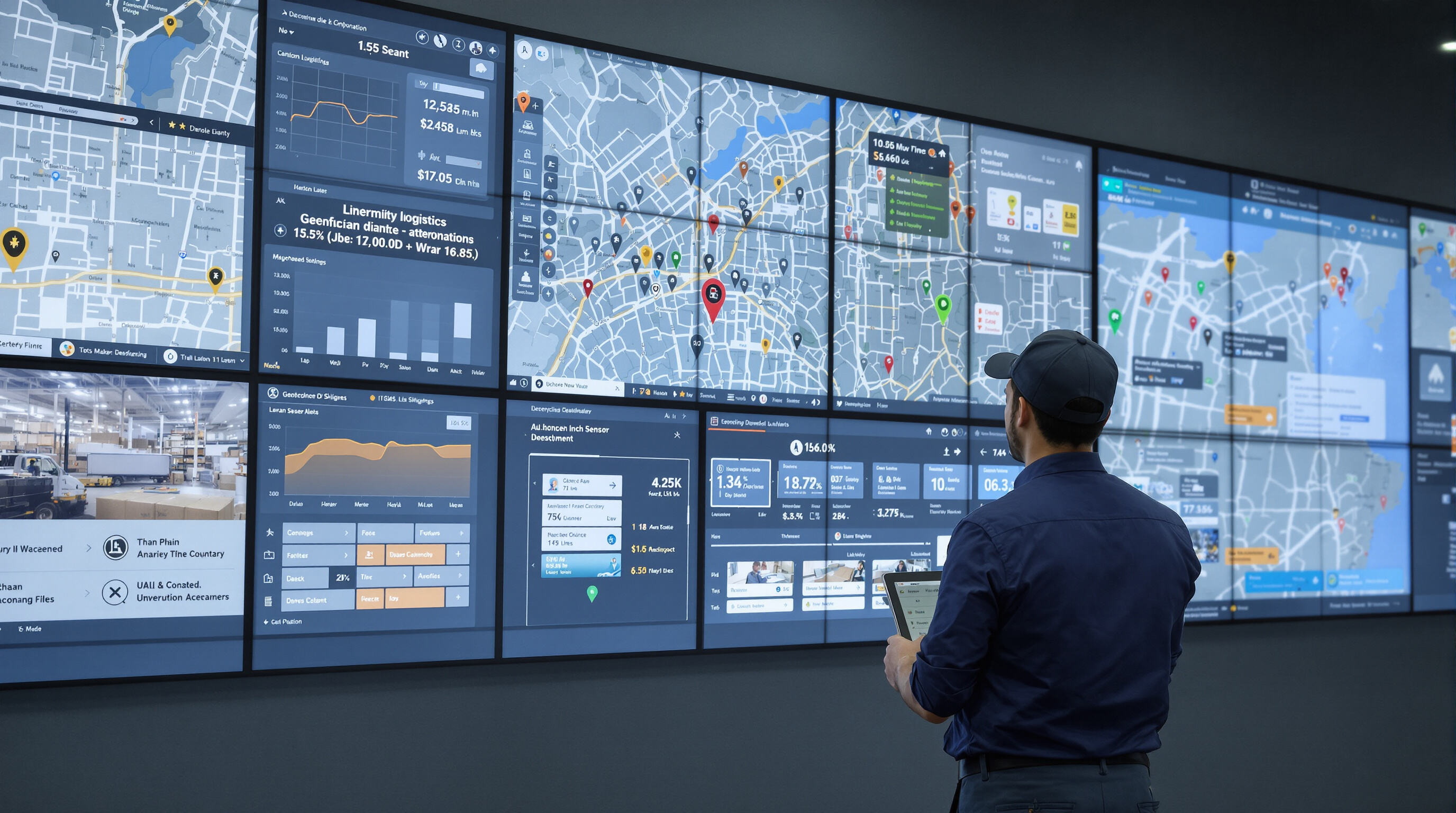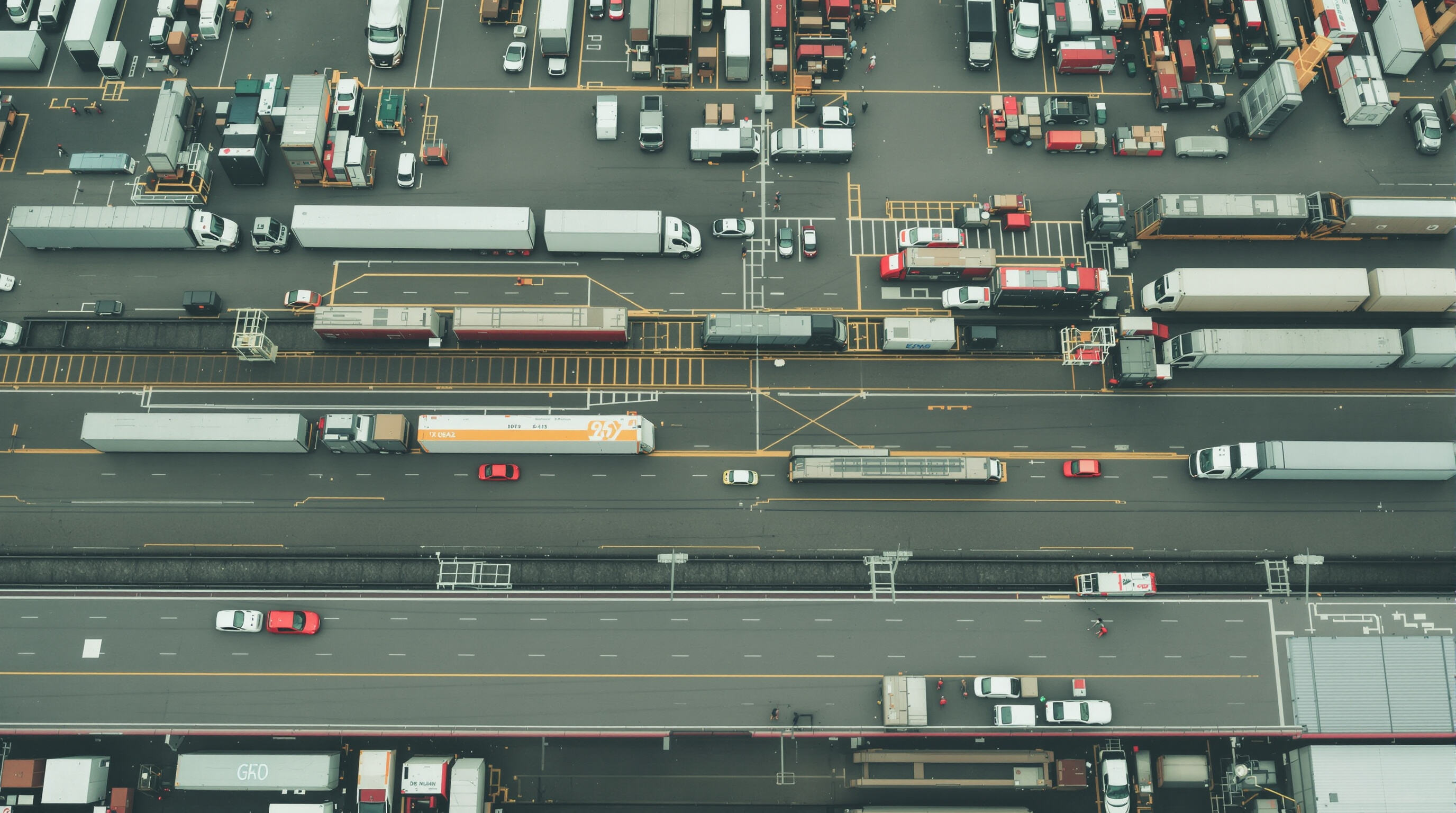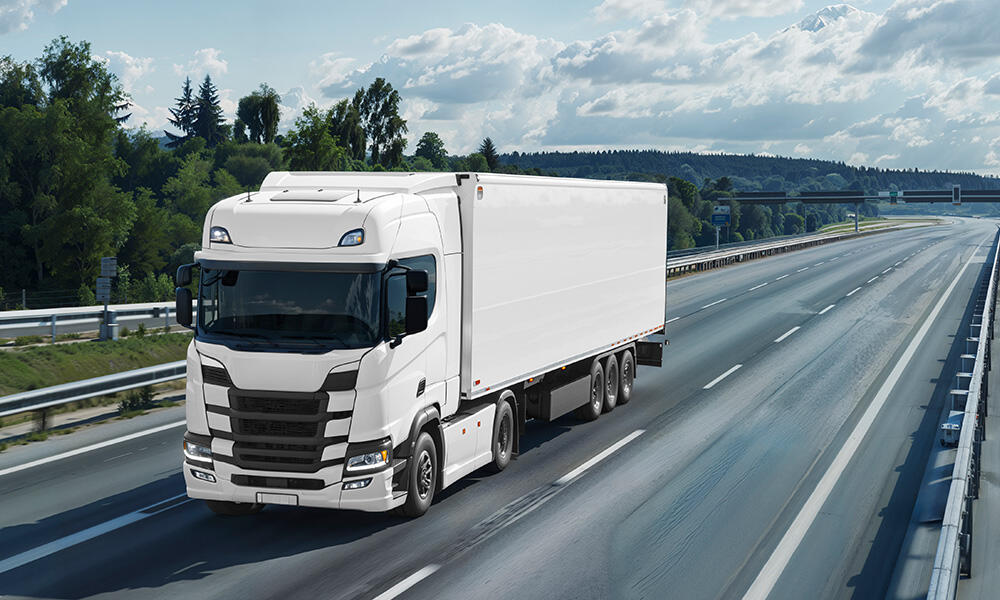From Load Boards to Managed Services: The Evolution of American Trucking Service
The Limitations of Traditional Load Boards in Modern Freight Operations
Old school load boards just aren't cutting it anymore in today's complicated freight world. Even though tech has come a long way in logistics, most transport teams still hang onto those disconnected TMS systems that can't optimize things in real time. About three quarters of them actually depend on these ancient tools, which gives everyone a broken view of what's going on. Shippers struggle to change routes when needed or deal with sudden capacity issues because of this poor visibility. And let's not forget the manual posting process either. Brokers tell us it takes forever sometimes. Nearly 70% say they wait over 12 whole hours from when they post a shipment until some carrier finally says yes in those spot markets.
How Managed American Trucking Service Delivers Operational Certainty
Managed services today are moving away from simple transaction based load matching toward something more substantial partnership focused arrangements. When companies start using predictive analytics alongside established carrier contracts, they tend to see around a 40 percent drop in rejected freight shipments compared to what happens with regular brokers. We're seeing this trend play out in real time across the industry too. Take a look at the Truck as a Service market for example. Industry reports suggest it will balloon to nearly $30 billion within just a few years now. Why? Because businesses want assurance about available trucks when they need them most, plus predictable costs month after month instead of those wild swings we all hate. There's plenty going for these new approaches beyond just numbers on paper.
- Automated tender acceptance within two hours
- Stable pricing through volume-based carrier contracts
- Dedicated logistics teams managing exceptions and disruptions
This model provides shippers with greater control, consistency, and resilience across their freight operations.
The Role of TMS and Real-Time Tracking in Advancing Freight Management
Cloud-based TMS platforms now integrate seamlessly with ELDs and warehouse management systems, enabling smarter, more responsive freight operations. Key capabilities and their impacts include:
| Capability | Operational Impact |
|---|---|
| Predictive load matching | 22% fewer empty miles |
| Dynamic rerouting | 18% faster delivery times |
| Automated detention tracking | 35% faster invoice resolution |
These systems deliver millimeter-level shipment visibility while automating 73% of routine logistics tasks through AI-driven workflows. Real-time data sharing across stakeholders reduces communication-related delays by 61%, establishing a cohesive operational framework that traditional load boards cannot match.
End-to-End Supply Chain Visibility for Reliable American Trucking Service

Achieving Full Transparency with Integrated Logistics Tracking
Freight operations today need something better than just regular GPS tracking systems. The top companies in the business have started offering all-in-one platforms that bring together data from different parts of shipping including full truckloads, less-than-truckload shipments, and those last few miles getting goods to customers. With geofencing technology and internet connected sensors, shippers get instant warnings if cargo strays off course. According to a study by Ponemon Institute last year, this kind of monitoring cuts down on stolen goods by around 37%. What's more, modern tracking goes way beyond simple location info. Temperature sensors keep tabs on perishables while smart algorithms predict where problems might pop up before they happen. This gives logistics managers complete visibility throughout every step of the journey from warehouse to doorstep.
Enhancing Shipment Reliability Through Real-Time Data and Alerts
When logistics operations get real time data flowing through them, it changes everything from just reacting to problems into actually anticipating what might go wrong before it happens. The system sends out automatic warnings whenever there's bad weather ahead, traffic starts backing up somewhere unexpected, or when carriers aren't performing as expected. With these alerts, shipping teams can redirect cargo much quicker than they ever could before – studies show around 58 percent improvement in response times according to the latest industry benchmarks from 2024. American Trucking Service customers are seeing incredible results too. They maintain an impressive 97 percent on time delivery rate even when seasonal demand spikes create chaos across the supply chain. How? Their systems constantly update estimated arrival times using current road conditions and warehouse queue information, so drivers never find themselves stuck waiting at empty docks when everyone else is already gone for the day.
Balancing Control and Convenience in Logistics Outsourcing
Visibility tools integrated into shipping systems give companies better control over their operations without making them deal with every little detail themselves. Dashboards in one place show how well carriers are following rules, track fuel usage efficiency, and spot patterns in detention times too. These platforms work best when connected to large networks of transportation providers. According to Gartner's research from last year, combining automated systems with human oversight cuts down on paperwork and admin work by about 40%. Machine learning does most of the heavy lifting here, sorting out what really matters from all the noise and handling repetitive checks automatically so staff can focus on bigger picture stuff instead.
Strategic Carrier Sourcing Powered by Performance Analytics
Vetting and Selecting High-Performing Carriers for Consistent Capacity
Top American Trucking Service providers use predictive analytics and historical performance data to identify carriers with proven expertise on specific lanes. According to a 2025 Logistics Viewpoints study, companies using dynamic carrier scorecards reduced service failures by 32% and improved capacity utilization by 19%. Evaluation now focuses on key metrics such as:
- On-time delivery (OTD) rates by lane
- Claims frequency and resolution speed
-
Fuel efficiency relative to industry benchmarks
This data-driven approach ensures reliable access to capacity, even during high-demand periods.
Using KPIs and Service Metrics to Drive Accountability
Looking at specific KPIs such as how often carriers accept tenders and how much time cargo spends waiting becomes really important when trying to keep everyone accountable throughout shipping networks. Companies that monitor around 15 different performance indicators tend to fix problems within one or two days instead of the usual five to seven day wait seen elsewhere in the industry. Research from early 2024 on independent freight buying platforms shows something interesting too. Businesses employing sophisticated KPI systems actually cut down their transport expenses by roughly 12 to 18 percent compared to companies stuck with simple tracking methods. This kind of savings makes a real difference over time, especially for logistics managers watching every dollar spent on moving goods.
The Human Touch: Balancing Automation and Expertise in Carrier Management
While AI processes vast amounts of operational data, experienced logistics professionals remain vital for strategic decision-making. A 2024 industry survey revealed that 78% of shippers rely on human intervention during major disruptions like severe weather or capacity crunches. This hybrid model combines algorithmic precision with real-world judgment to enable:
- Context-aware decisions for lane-specific challenges
- Relationship-driven negotiations for better rates and terms
-
Rapid escalation protocols for mission-critical shipments
The result is optimized carrier performance with the flexibility to adapt to unforeseen events.
Optimizing Multi-Modal Transportation Planning for Cost and Efficiency

Unifying Parcel, LTL, and FTL Under a Single Planning Framework
Top US trucking companies are moving away from their old fragmented logistics approaches and adopting all-in-one planning systems that work better for parcels, less-than-truckload (LTL), and full truckload (FTL) shipments. According to some recent research from 2024, when these companies implement integrated systems, they typically save between 18% and 22% on freight expenses. The secret sauce? These systems use smart matching algorithms to figure out which transportation method works best for each individual shipment. Take regional e-commerce packages as an example. When these smaller items get grouped together into larger LTL shipments during slower times of day, it cuts down on fuel consumption without hurting delivery speeds or customer satisfaction.
Dynamic Routing and Data-Driven Decisions in Domestic Trucking
Modern transportation management systems can actually reroute shipments on the fly when faced with traffic jams, bad weather, or warehouse limitations. Take for instance a big name company in the Fortune 500 list that cut down their detention costs by almost 37 percent according to some research from PwC back in 2023. They did this clever thing where they used fancy predictive models to tweak shipping paths when ports got backed up. What makes these advanced systems so valuable is how they juggle different expenses such as gas money and driver work time while still meeting those tight delivery deadlines. The whole system gets smarter over time as it learns from all sorts of unexpected situations that pop up along the way.
Realizing Efficiency Gains Across Complex Shipping Networks
When it comes to big logistics networks that change with seasons and have those long haul routes running through them, multi-modal optimization really shines. Companies that combine rail transport for the longer stretches with trucks handling the last mile tend to get around 12 to 15 percent better use out of their assets according to CSCMP data from last year. What's interesting is how this approach helps cut down on environmental impact too. Take for instance when freight moves 1000 miles via rail instead of truck roadways - the EPA's GHG calculator shows that drops carbon emissions by almost two thirds. And here's what makes it even better: despite all these green benefits, packages still arrive on time without any noticeable delays in service quality.
Frequently Asked Questions
What are traditional load boards?
Traditional load boards are platforms where shippers and carriers post and find available shipments manually, often leading to delays and inefficiencies in modern freight operations.
How do managed trucking services differ from traditional load boards?
Managed trucking services utilize predictive analytics and established carrier contracts for partnership-focused arrangements, resulting in reduced freight rejections and more predictable operational costs.
What role do TMS platforms play in freight management?
TMS platforms integrate with ELDs and warehouse systems for responsive freight operations, providing capabilities such as predictive load matching, dynamic rerouting, and automated detention tracking.
How does real-time data improve shipment reliability?
Real-time data allows logistics teams to anticipate issues and redirect cargo efficiently, improving response times and maintaining high on-time delivery rates even during chaotic periods.
What are the benefits of multi-modal transportation planning?
Multi-modal transportation planning combines different transport methods to optimize cost and efficiency, reducing environmental impact while ensuring timely deliveries.
Table of Contents
- From Load Boards to Managed Services: The Evolution of American Trucking Service
-
End-to-End Supply Chain Visibility for Reliable American Trucking Service
- Achieving Full Transparency with Integrated Logistics Tracking
- Enhancing Shipment Reliability Through Real-Time Data and Alerts
- Balancing Control and Convenience in Logistics Outsourcing
- Strategic Carrier Sourcing Powered by Performance Analytics
- Vetting and Selecting High-Performing Carriers for Consistent Capacity
- Using KPIs and Service Metrics to Drive Accountability
- The Human Touch: Balancing Automation and Expertise in Carrier Management
- Optimizing Multi-Modal Transportation Planning for Cost and Efficiency
- Frequently Asked Questions

